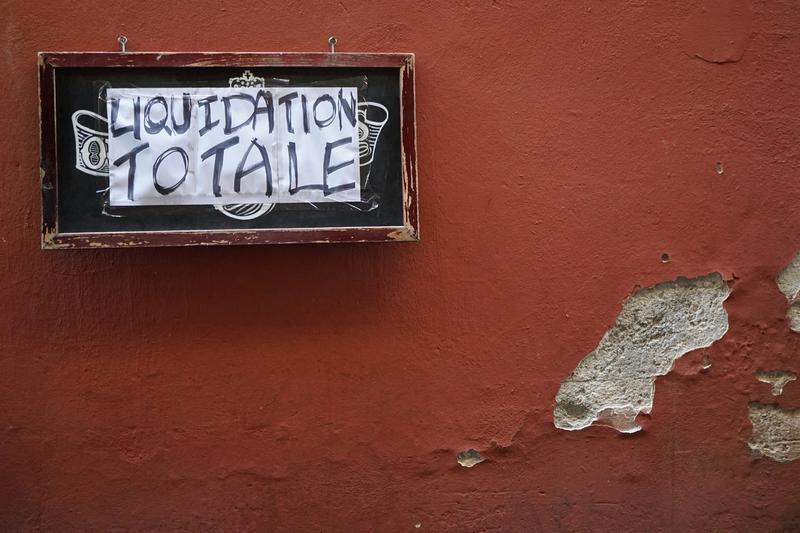
Bankruptcy vs Liquidation: Key Differences to Know
Bankruptcy and liquidation are very different concepts, but they’re sometimes confused with each other. While both processes are designed to resolve insolvency, the situations in which either one will apply are very different.
Here, we take a closer look at when business bankruptcy might apply and when company liquidation might happen.
Company bankruptcy and when to choose it
Business bankruptcy is an option of last resort. In Australia, bankruptcy applies only to individuals, not companies.
You could be declared bankrupt if you’re an individual and you’re in financial trouble to the extent you can’t meet your debt obligations.
Whether you’re running your business as a sole trader or as a partnership, you as an individual could be declared bankrupt, not your business, from a technical standpoint. For this reason, a company can’t enter bankruptcy, because there are no bankruptcy provisions for businesses operating as a company structure.
When you’re declared bankrupt, a few things happen:
- Declaration by law – This is a legal status that applies to the individual for three years, with certain consequences like having a trustee appointed to manage the individual’s money.
- Debt – Most of the debt will be gotten rid of, and debt collectors will stop contacting the bankrupt person.
- National Personal Insolvency Index – The bankruptcy is listed permanently on the National Personal Insolvency Index, which is publicly accessible.
- Credit report – The bankruptcy will be included in the bankrupt person’s credit report for seven years.
- Trustee – A registered bankruptcy trustee will manage much of the bankrupt party’s finances. He or she will try to pay off the debts, possibly by selling assets and taking income earned over a certain limit.
- Restriction – During the three years, the bankrupt party can be restricted in what they can do. This could include restrictions on running a company or working in certain professions.
Bankruptcy can be voluntary or involuntary. You can apply to be declared bankrupt, or you can be taken to court by your creditors and the court could declare you bankrupt.
Bankruptcy is one option among many others for dealing with debt. Someone who’s insolvent should look at other options first, like working with creditors for an informal repayment agreement, get expert advice to help out with their business, or pursue one of the alternatives to bankruptcy under the Bankruptcy Act.
So bankruptcy could be the right option if you’re an individual struggling with debt and you have explored all other options (ideally with professional help) and discovered there are no viable alternatives.
Business liquidation and when to choose it
In Australia, business liquidation applies only to businesses operating under a company structure. It’s a way of dealing with debt that can’t be repaid, and it’s generally considered an option of last resort.
Liquidation involves appointing a liquidator who will realise the company’s assets and try to repay the creditors. The company directors cede control and the liquidator takes over the business. Once the assets have been sold and the company’s structure dismantled, the business is shut down permanently.
Liquidation can happen after the business has already entered voluntary administration. It can also happen if the company has terminated a Deed of Company Arrangement.
Liquidation can be court ordered, which is when creditors apply to the court to wind up a company (court liquidation). Liquidation could, alternatively, be voluntary, which happens when the company’s shareholders resolve to enter liquidation (creditors’ voluntary liquidation).
Note that liquidation can also happen to solvent companies if the shareholders decide to wind up the company and cease trading for non-debt-related reasons (members’ voluntary liquidation).
So liquidation could be the right option if the company has no other options, has debts that have to be repaid, and can’t continue to trade viably without breaching insolvent trading laws.
For solvent and insolvent companies, it’s the only way to cease operations and permanently shut down the business, and to do so in an orderly and cost-effective way. It also gives the business an opportunity to explore what went wrong.
Bankruptcy vs liquidation for businesses: key differences
Bankruptcy and liquidation both involve a person or business being unable to repay their debts. The key difference is bankruptcy only ever applies to individual persons and liquidation can only apply to businesses operating as a company.
Additionally, while bankruptcy last only three years, liquidation always leads to a permanent closure of the business. And bankruptcy is usually only due to insolvency, while liquidation could be initiated because of insolvency or because the members of a solvent business want to close it down.
Australian Debt Solvers are the experts in business liquidation, and can help you successfully close down your business. Contact us online today for more information, or call us on 1300 789 499.
Or, if you are facing financial difficulties but would like to try to continue operating your company, consider a voluntary administration – this would allow you to explore options outside of liquidation.
We care about our customers
At Australian Debt solvers we take feedback seriously and pride ourselves on providing the best customer services possible
Rated 5 out of 5
